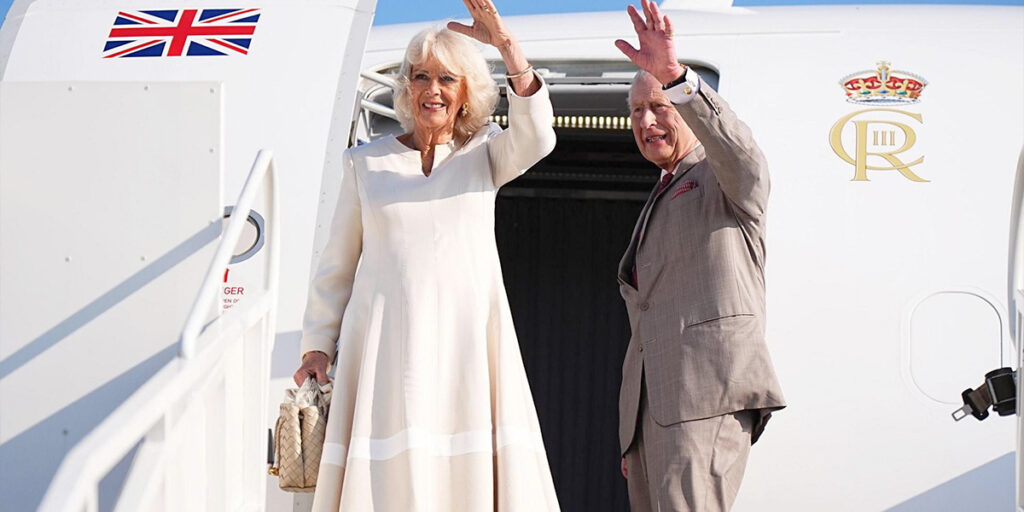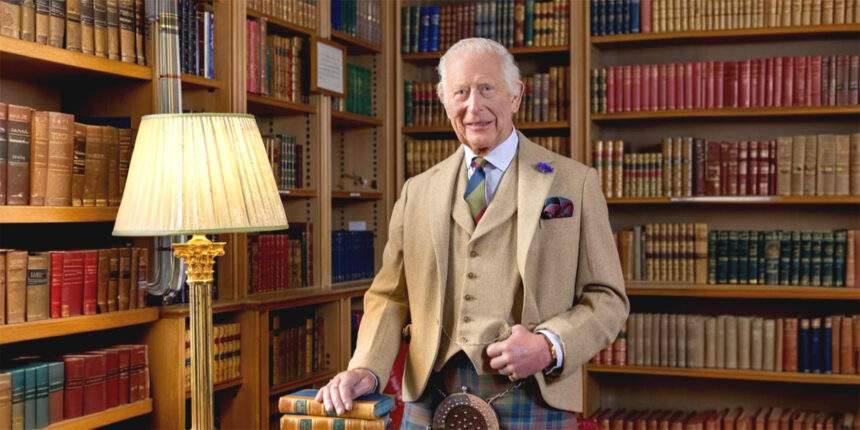Introduction
King Charles III has emerged as the world’s symbol of environmental awareness and eco-friendly life in recent years. The monarch, famous for his decades-long stint as an ecological preserver, is changing how members of the British royal family travel. At a time when the world is moving towards greener alternatives, King Charles sustainable travel initiatives are not only timely measures but revolutionary. In this article, we look at the top 10 King Charles sustainable travel initiatives that are transforming how royals and possibly even we use travel in the year 2025.
1. Transition to Electric and Hybrid Vehicles
One of the immediately apparent changes introduced under the leadership of King Charles has been the change of the royal fleet from petrol-based vehicles to electric and hybrid ones. The King has been reported taking an electric Jaguar I-PACE Toyota drive in the streets of London, a clear push in the course of minimizing the carbon footprint in royal movements. The royal household has also continued to put more money towards the development of EV infrastructure, including the installation of private electric vehicle charging stations in royal estates.
2. Royal Train Powered by Biofuel
The Royal Train, a classic and symbolic component of travel by the members of the British royalty, has seen an eco-friendly facelift. Following King Charles’s instruction, it is now operating on sustainable biofuel, which has dramatically decreased the amount of carbon emissions. This transition is consistent with the monarch’s long-standing clamor for clean energy solutions. Moreover, engineers have strived to upgrade the system of the train to maximize energy efficiency, thereby increasing its sustainability footprint.
3. Encouraging Carbon Offsetting for Official Travel
King Charles has encouraged the use of carbon offsetting for all royal official travels. From international flights or domestic engagements, carbon offsetting programs have been incorporated in the royal travel planning system, as a good example of government and corporate travel protocols. These offsets fund global reforestation and renewable energy initiatives in developing parts of the world.
4. Collaborations with Sustainable Tourism Boards
The royal household has entered into agreements with sustainable tourism boards in several nations. When traveling abroad, King Charles makes sure that the location and accommodation selected refer to environmentally friendly practices, thus contributing to the green economy and emphasizing the importance of sustainable traveling. The awareness campaigns for environmental conservation also form part of the partnerships, arousing the world’s attention about the need to practice responsible tourism.
5. Promoting Slow Travel
Where there is an obsession with speed, King Charles proposes “slow travel”- movement of slow travel advocates, which promotes making fewer trips, spending longer periods, and making deeper connections over longer periods with local communities. This initiative cuts the net travel emissions and develops more concrete relationships between nations. By sticking to quality rather than quantity, the royal family sets a good example for steady exploration.
6. Sustainable Fashion for Royal Tours
Although it may not immediately appear connected to travel, the clothing that is worn at royal visits is part of the sustainability equation. King Charles and other royal members have taken a stand to wear products or previously used clothes during official visits, which contributes to minimizing the effects of fast fashion on the environment. This also involves partnership with ethical designers and the use of natural, biodegradable fabrics.

7. Utilizing Local and Eco-Friendly Accommodations
The days when luxury and prestige were the only standard for accommodating royals while they were on international tours are long gone. Eco-certified hotels and lodgings that comply with environmental standards are now on top of King Charles’ priority, an extension of his efforts to make sustainable choices a part of every element of royal life. These are the properties that frequently make use of solar power, engage in waste recycling, and participate in local efforts of conservation efforts.
8. Eco-Conscious Public Transport Use
Surprising many, King Charles has occasionally opted for public transport options like electric buses and trains during domestic travels. This move not only reduces emissions but also normalizes sustainable transport among the general public. It sends a strong signal that convenience and comfort need not come at the cost of the environment.
9. Royal Support for Green Aviation Technologies
Some of the efforts King Charles has displayed publicly and financed include research in green technologies such as hydrogen-powered planes and the Sustainable Aviation Fuel (SAF). Understanding air travel as one of the biggest contributors to the emission of carbon, King Charles has publicly endorsed and funded research in these green technologies. He has been in forums and think tanks that have marketed these technologies, which has led to an increased rate of adoption by the aviation industry.
10. Raising Public Awareness through Royal Platforms
Finally, perhaps one of the most impactful aspects of King Charles sustainable travel initiatives is his use of the royal platform to raise awareness. From speeches to social media campaigns, the monarchy now actively educates the public on the importance of sustainable travel. The Royal Family’s website and public events now feature educational content designed to inspire eco-conscious behaviors across all age groups.
Impact of These Initiatives
Such initiatives are not only a sign of a new path that the British monarchy is taking, but they also act as a precedent for eco-conscious travel around the world. The steps taken by King Charles serve as evidence that sustainability and tradition can go hand in hand and make millions of people reconsider their travel habits. Ripple effects of such actions may for decades have consequences which might go beyond royal tours to have effects on policies and motivate public movements across the world.
Why It Matters
The amount of carbon emissions in the world that come from the travel industry is high. When figures such as King Charles make decisive steps towards sustainability, their messages are powerful. His moves encourage governments, corporations, and even people to go greener. This leadership is particularly critical as the threat of climate change to ecosystems and communities around the world keeps increasing.
How You Can Follow King Charles’s Lead
- Choose electric or hybrid vehicles for your daily commute.
- Offset your carbon footprint when flying.
- Support eco-friendly accommodations.
- Opt for slow travel experiences.
- Choose clothing from sustainable and ethical brands.
- Take public transport or carpool to reduce emissions.
- Spread awareness through your own social platforms.
Conclusion
The top 10 King Charles sustainable travel initiatives are not just for royalty, but implementable, replicable, and meaningful. These are examples of future-focused thinking, which combines traditions of the royals with urgent climate responsibility. Such leadership is not just praiseworthy in a world that is struggling with climate change. It’s essential. Being inspired by King Charles’s example, we can do our best by embracing eco-conscious transport, supporting green tourism, wearing sustainable fashion, and promoting innovative environmental policies to create a better and environmentally friendly future.
Every initiative can be perceived as a reminder that the task of sustainability is common, and it can be included in everyday life, regardless of your status and way of life. Let the royal roadmap to green travel be a guide on how we should all be.
Enjoyed the read? Don’t miss out!
If you found this article helpful or interesting, make sure to bookmark our blog, share it with friends, and subscribe to our newsletter for more real stories, expert insights, and trending topics every week.
Stay informed. Stay inspired. Join our community today!
Frequently Asked Questions (FAQ)
Does King Charles still use private jets for royal tours?
While private jets are used in rare circumstances due to security or scheduling needs, King Charles strongly prefers commercial flights or sustainable aviation options. Every flight is now carbon audited and offset.
What inspired King Charles to become so eco-conscious?
King Charles has been an environmental advocate for over five decades, starting in the 1970s. His deep concern for climate change, biodiversity loss, and sustainable living has shaped his actions as both a prince and a monarch.
Are other members of the Royal Family following his example?
Yes, Prince William, Princess Kate, and even Queen Camilla have adopted sustainable practices, especially in their travel arrangements, aligning with King Charles’s vision for a green monarchy.
How does the Royal Family offset their travel emissions?
They use verified carbon offset programs, such as tree planting, renewable energy projects, and conservation initiatives often certified by global organizations like Gold Standard or Verra.
Can the public track the environmental impact of royal tours?
While not all data is public, several annual royal reports now include environmental sections, and King Charles has advocated for more transparency, making it easier to understand the royal household’s carbon footprint.





